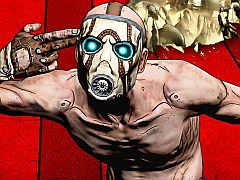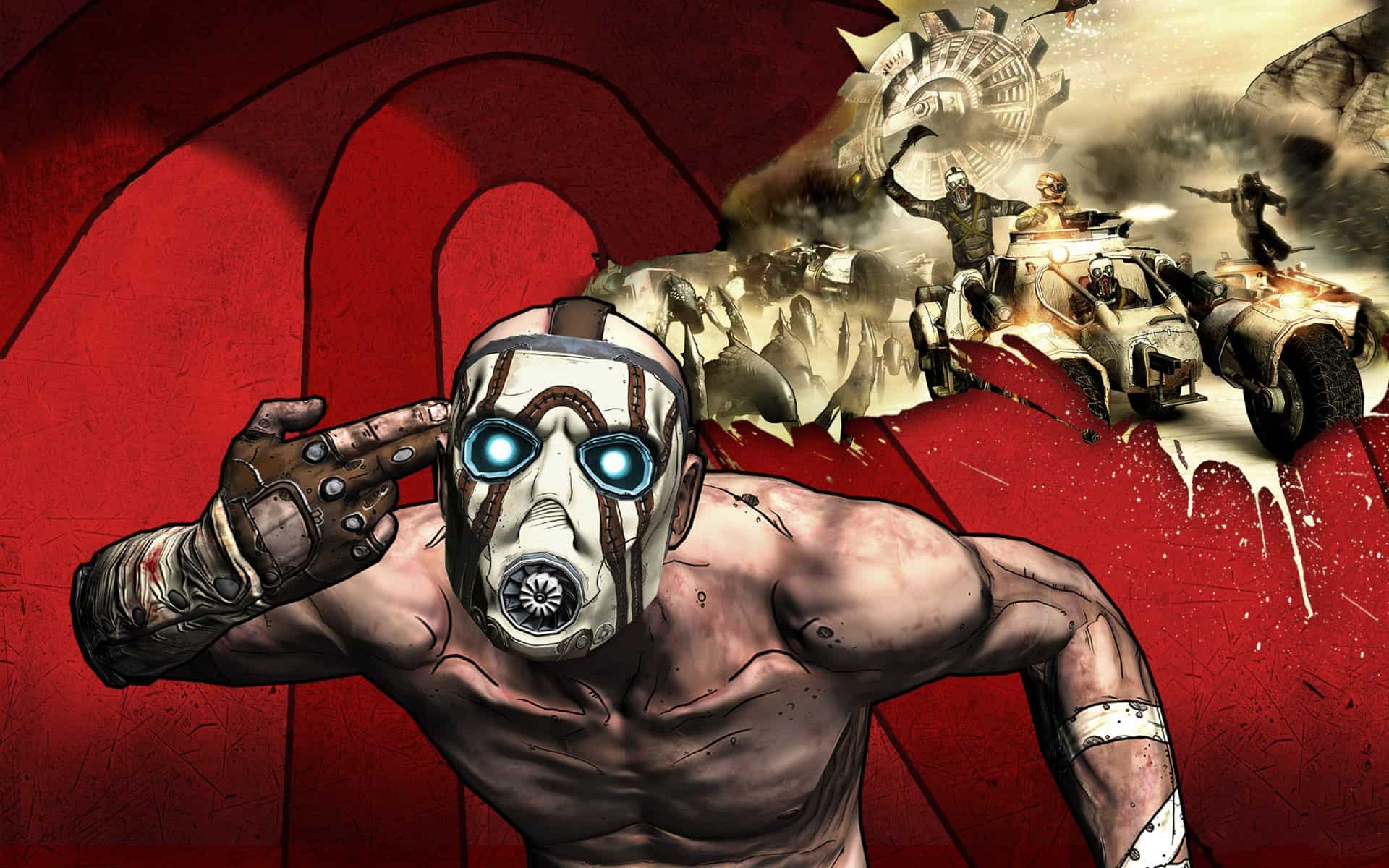You can trust VideoGamer. Our team of gaming experts spend hours testing and reviewing the latest games, to ensure you're reading the most comprehensive guide possible. Rest assured, all imagery and advice is unique and original. Check out how we test and review games here
Striking co-op FPS/RPG hybrid Borderlands will be Gearbox Software’s best game to date. I can feel confident in that claim because I’ve played a 12 hour preview build for, wait for it, 12 hours. This, of course, doesn’t mean I’ve finished the game, or even seen the majority of it (the final game will include at least 60 hours worth of gaming and hundreds of quests), but it does mean I now know what all the post art style switch fuss is about. All that fuss, by the way, is well deserved.
Borderlands is a game that’s a risk, as Gearbox president Randy Pitchford has admitted, but its very existence shows the developer is confident in its own ability to create a hardcore shooter with a twist. The twist, as everybody who has been following the game knows, is the striking art style. Borderlands looks like a cel-shaded comic book. 2000 AD has been mentioned, as has Bethesda’s behemoth Fallout 3, and the voice acting and soundtrack bring to mind cowboy sci-fi Firefly, but for me it’s more like a fusion of 2003 shooter XIII and Blizzard’s loot-obsessed hack and slash Diablo.
The Fallout 3 comparisons come from the post apocalyptic, Mad Max style setting and the RPG mechanics that roll through Borderlands’ veins like blood-filled dice. Except the dice aren’t rolling in Borderlands – yes, there are four classic RPG classes to pick from; yes, you level up; yes, you spend points in the three-pronged skill trees; yes, each of the many millions (yes, millions) of weapons have their own statistics; and yes, the bulk of the gameplay sees you completing MMO-style quests picked up from NPCs, but Borderlands, first and foremost, is a shooter.
And, as a shooter, it feels great. It feels weighty, bulky, impactful and meaty. When you fire a weapon in Borderlands, not only do the computer-controlled goons and hordes of Skag beasts know about it, but you do too. That Gearbox has decided to airlift Call of Duty’s control layout and drop it straight into Borderlands’ Pandora is telling. Above all else, the game should be a great shooter, something Fallout 3 wasn’t.
Diablo is an appropriate comparison because in Borderlands there’s lots of loot. More loot than I’ve ever seen in a shooter. When you kill one of the many variations of Skag (including the “Badass” type, or a demented, masked bandit (some of which are freaky midgets), little objects spurt out of the falling corpse like failed fireworks. Usually it’s hard cash, but if you’re low on health it might be a health boost, or some grenades or ammo. But occasionally a new weapon, created just for you by Borderlands’ impressive random weapon creator, appears. When this happens, you breathe in a little bit. Your heart races ever so slightly. Your eyes and mouth open. Then your brain kicks in and a single question is asked: is it better than what I’ve already got?
To answer that question, it’s stat comparison time. How much damage does each hit cause? Does it add elemental damage, for example fire? What’s the rate of fire? Does it have a melee bonus? Is it a weapon my character is proficient in? Well? WELL?
I spent most of my 12 hours with Borderlands pondering these questions. As far as loot whores go, I’m a dirty rotten bitch. I love this stuff. It’s a blue! It’s a purple! But that green has a better spread damage than that blue. That sniper rifle will every now and again make my enemy burn to a crisp, making it a better choice than this sniper rifle that does more single hit damage. This, ladies and gentlemen, is Diablo baby.
But it’s the weapons caches, sporadically dotted about Borderlands’ game world, that really get the juices flowing. When you find one of these and activate them, there’s an excitement about what might be inside that rekindles memories of waiting for loot to drop off World of Warcraft’s dungeon bosses. Here you’re guaranteed a couple of weapons. Usually they’re common crap, but every now and again you get something worth its weight in gold; something so good you can’t help but head off into the nearest shit storm just to try it out.
On Neon’s recommendation, I chose Lilith for said shit storms, the female of Borderlands’ four playable characters group. Lilith is more nimble than her counterparts, but, as is video game law, less of a double hard bastard as a payoff. But she’s got an interesting ability to even the odds – called Phasewalk (unlocked at level five). This cooldown-controlled power allows her to become invisible, sneak around enemies then detonate a shockwave that does area of affect damage. This lends her a distinct rogue feel, although at early levels it feels useless, with standard weapons fire much more effective for the wanton removal of life from body. By concentrating on the Assassin path of the skill tree, though, Lilith can become quite the useful backstabbing rogue, with additional damage done to the Phase Blast and buffs triggered in and out of Phasewalk up for grabs.
In co-operative situations, however, Lilith is best played as a support/crowd control class, and it’s here that she shows her spurs. As you work down her skill tree buff and debuff abilities become available. Intuition, for example, from the Elemental path, increases your movement speed and the experience you and your team mates earn for a few seconds every time you kill something. Dramatic Entrance, from the Controller path, causes your Phase Blast to Daze enemies, reducing their movement speed and accuracy. The ability to tailor each class to one of three different specialisations should ensure Borderlands doesn’t force players into any particular play style, and, crucially, add replayability.
Although I wasn’t able to play the game in full four-player co-op mode, Neon and I dabbled in two player split-screen. Borderlands splits the action vertically, with no apparent way of switching to a horizontal split. As you’d expect, playing this way isn’t ideal – it’s hard to see what’s going on, even on a big television, and although the game works well enough, online co-op will be the way to go.
Played on your lonesome, Borderlands might not set the world on fire. While the sheer thrill of shooting stuff is spectacularly engaging, from what I’ve played the quests are a bit of a letdown. In classic MMO style, most are ‘go here and kill X amount of this’ quests, or fetch quests, or boss kill quests (bosses drop the good stuff). Purely because of the way the game is structured it’s hard to get a sense of story, or narrative, either. It will be interesting to see how Borderlands evolves in its later hours, and how much of a bearing plot brings. Fingers crossed the quests get more interesting.
Whatever the case, Borderlands will be at its best when played with friends. As part of a well-balanced four-player team, the game should prove a barrel of laughs. The best loot will be gained from multiplayer sessions spent in some infested corner of Borderlands’ world, with players co-ordinating attacks and scheming well-thought out strategy as if raiding an MMO dungeon. You won’t get this from other high-profile shooters coming out this Christmas. You won’t get this from Halo 3: ODST or Call of Duty: Modern Warfare 2. And because of this, it won’t just be Borderlands’ art style that’ll make it stand out from the crowd.
Borderlands is due for release on Xbox 360, PS3 and PC on October 23.
Borderlands
- Platform(s): Nintendo Switch, PC, PlayStation 3, PlayStation 4, Xbox 360, Xbox One
- Genre(s): Action, First Person, RPG, Shooter

/https://oimg.videogamer.com/images/1b5b/borderlands_46.jpg)
/https://oimg.videogamer.com/images/8dc1/borderlands_44.jpg)
/https://oimg.videogamer.com/images/d859/borderlands_45.jpg)






